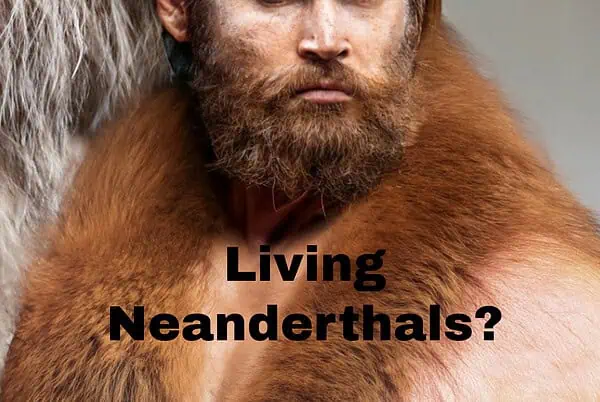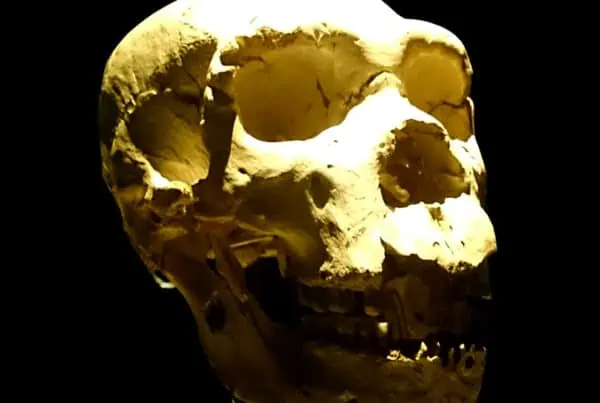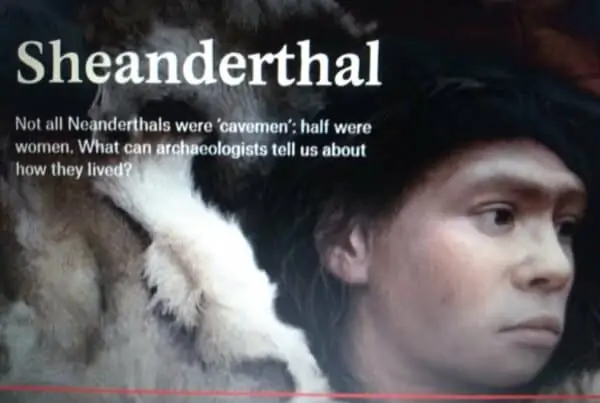Neanderthal diversity larger than believed?
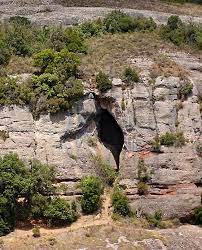 Neanderthal numbers reached 100,000 at the height of their demographic climb. There are 3 recognized subspecies of Neanderthals: Western, Vindija (Croatia) and Altai. There were also Neanderthal-Denisovan hybrids in north central Asia.
Neanderthal numbers reached 100,000 at the height of their demographic climb. There are 3 recognized subspecies of Neanderthals: Western, Vindija (Croatia) and Altai. There were also Neanderthal-Denisovan hybrids in north central Asia.
Now, Catalonian researchers have announced 50 new fossil bones discovered in the Cova Simanya, not far from Barcelona. After extensive analysis, they have determined that while the bones are definitely Neanderthal, they seem to be distinct. A new member of the Neanderthal family of subspecies? Similarly, there are 4 subspecies of Chimpanzees.
The paper released September 19 on frontiersin.org, is titled,
A new assemblage of late Neanderthal remains from Cova Simanya (NE Iberia)
An impressive array of authors, including:
Juan I. Morales, Artur Cebria, Maria Soto and Antonio Rodriguez-Hidalgo.
From the Abstract:
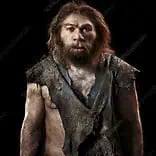 This study presents an exceptional collection of 54 Late Pleistocene human remains that correspond to at least three Neanderthal individuals from Simanya Gran, the main gallery of Cova Simanya, located in the northeastern Iberian Peninsula. The collection comprised 53 unpublished remains that were unearthed during the 1970s and an additional tooth discovered during 2021 excavations.
This study presents an exceptional collection of 54 Late Pleistocene human remains that correspond to at least three Neanderthal individuals from Simanya Gran, the main gallery of Cova Simanya, located in the northeastern Iberian Peninsula. The collection comprised 53 unpublished remains that were unearthed during the 1970s and an additional tooth discovered during 2021 excavations.
The specimens represent an adult with a small stature, a periadolescent aged approximately 11.5 years, and an immature individual aged approximately 7.7 years, thus offering a more complete demographic perspective.
The collection encompasses diverse anatomical parts including upper and lower dentition, mandible, vertebrae, and limb bones from both the upper and lower extremities. Attempts to extract aDNA were unsuccessful. Renewed archaeological investigations at Cova Simanya have facilitated the reevaluation of the original stratigraphic context of these remains, leading to the discovery of the additional tooth, aligning with the periadolescent individual.
[Increase] our understanding of Neanderthal demographics…
Continuing:
This assemblage is currently the most extensive Neanderthal collection from the northeastern Mediterranean Iberia, offering invaluable insights into the morphology and evolutionary trajectory of Late Pleistocene hominins. Hence, Simanya Neanderthals will enhance our understanding of Neanderthal demographics and evolution, paving the way for an in-depth examination of the morphological diversity and evolutionary context of Iberian Neanderthals.
The authors explain that the paper is a result of years of research of a museum collection. The bones and the cave have an interesting history:
The “Museum Collection” was collected by an amateur, Mr. Miguel Aznar, in 1978–79 and contains a combination of two distinct sources: 1) surface findings and 2) remains from a small excavation. The surface findings include isolated human and animal bones, pottery, and chert fragments. The excavation yielded human and faunal remains, as well as a few samples of charcoal, sediment, and carbonate crusts.
Different lineages of Neanderthals
The original collection sparked a second, more professional and robust excavation campaign in 2020.
 In 2020, five test pits were excavated to reconstruct the longitudinal stratigraphic development along the MG (S1, S2, and S3) and WG (S4–S5). In 2021, a more extensive excavation was carried out in the IMG sector . The latter provided a similar fossil assemblage to the “Museum Collection,” including a new Neanderthal tooth (SI-60) found in the area reported by Mr. Aznar…
In 2020, five test pits were excavated to reconstruct the longitudinal stratigraphic development along the MG (S1, S2, and S3) and WG (S4–S5). In 2021, a more extensive excavation was carried out in the IMG sector . The latter provided a similar fossil assemblage to the “Museum Collection,” including a new Neanderthal tooth (SI-60) found in the area reported by Mr. Aznar…
The results:
At least three individuals can be identified in the sample. The most complete one is defined by a complete left humerus SI-1. Several other postcranial remains (right proximal humerus, hand 1 and hand 2, vertebra; can be securely associated based on the size and taphonomic features. It corresponds
to an adult, with a stature estimation for the humerus of 154 ± 4.89 cm based on the equation (max. length: 293 mm), which is consistent with a Neanderthal female individual.
Antonion Rosas, one of the researchers on the project quoted:
“We are beginning to understand that there are different lineages of this extinct species.”
Most recently primatologists have debated adding a 5th subspecies of Chimpanzees for an isolated, separate North Congo population.
Homo sapiens have subspecies, as well.
But scientists are reluctant to define taxonomic classifications for Modern Humans due to political concerns.
NOTE: Watch a TikTok video by this site on this topic, “Neanderthal Subspecies just announced in Spain,” or a YouTube short.
